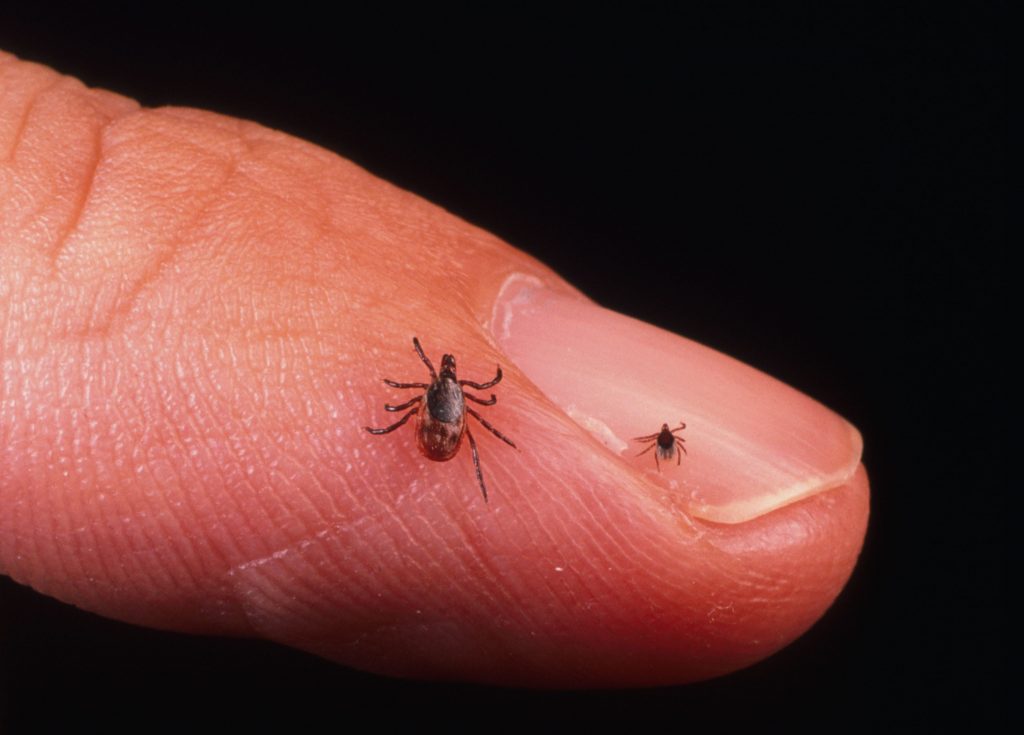- Tick season in the US starts in early spring and lasts through fall.
- The bugs can spread pathogens that cause Lyme disease and various other infections.
- Most tick-borne illnesses cause fevers and flu-like symptoms, and can be treated with antibiotics.
Pull up your socks and get out your insect repellent. It's tick season in the US.
Every year, some 50,000 cases of tick-borne illness are reported to the Centers for Disease Control and Prevention by local health departments. The official count is likely an underestimate — according to the CDC, the toll of Lyme disease alone could be nearly ten times that much.
Your risk of catching diseases from ticks depends on where you live, as there are at least nine different species active in the US. Most species are active in early spring through late fall, and a warming planet means there's an increasingly large area where ticks can thrive, according to the Environmental Protection Agency.
Here are a few tick-borne illnesses you should know the signs for this spring:
Lyme disease is the most common tick-borne illness in the US
Lyme disease is often associated with a distinctive "bulls-eye" rash — a red dot circled by a red ring, like a target — that can appear up to a month after a bite from the blacklegged tick.
Early symptoms of Lyme disease may also include fever, headache, and fatigue. If treated with antibiotics promptly, the illness should resolve within a couple weeks.
However, not every case of Lyme disease causes an obvious rash, and antibodies can take several weeks to show up on a diagnostic test, according to the CDC. If left untreated, the bacteria can invade the joints, nervous symptoms, and even the heart.
Out of every 100 cases of Lyme disease reported to the CDC, approximately:
- 25 progress to arthritis
- 9 have facial palsy (drooping)
- 4 develop nerve pain or numbness
- 3 have swelling in the brain or spinal cord
- 1 may develop Lyme carditis, which disrupts a normal heartbeat
Cases of Lyme disease are most frequently reported in the northeastern and upper midwestern United States, where the tick species ixodes scapularis is looking for a host. Also known as the deer tick, it spreads the bacteria Borrelia burgdorferi and more rarely Borrelia mayonii, which both can cause Lyme disease.
The blacklegged tick may also spread other bacteria
It's possible to be co-infected with bacteria that cause anaplasmosis, which usually looks like the flu, according to the Merck Manual. Symptoms may include fever, chills, nausea, vomiting, headache, muscle aches, and malaise — typically with an abrupt onset about 12 days after a tick bite.
Similarly, the blacklegged tick can transmit the bacterium Babesia microti or the powassan virus, which more rarely cause severe disease. Co-infections may be marked by a more severe course or incomplete response to treatment, or a later resurgence of symptoms.
Rocky Mountain spotted fever can be deadly
About 60% of cases of Rocky Mountain spotted fever are reported from North Carolina, Tennessee, Missouri, Arkansas, and Oklahoma, the CDC says. Cases are on the rise in certain parts of Arizona as well.
Early symptoms may be non-specific, including headache, fever, gastrointestinal issues, and a splotchy red rash. The results of blood tests for RMSF can take weeks to come back, so providers are recommended to treat suspected cases with doxycycline before the disease causes lasting damage to organs or blood vessels.
With early treatment in mind, it's important to note whether you were bitten by a tick or spent time in a woodsy area before getting sick. The bacterium Rickettsia rickettsii can be spread by a few different tick species in the US, including the Rocky Mountain wood tick, American dog tick, and the brown dog tick.
Case studies suggest that between 5 and 10% of RMSF cases are fatal. However, the fatality rate appears lower in disease surveillance data, likely because the illness has been counted in the same category as less severe spotted fevers since 2010.
The lone star tick can cause infection or a strange meat allergy
Native to the southeastern US, the lone star tick is known to cause ehrlichiosis, another flu-like infection caused by the bacteria E. chaffeensis and E. ewingii.
Three states — Oklahoma, Missouri, and Arkansas — account for 35% of all reported E. chaffeensis infections, according to the CDC.
However, an odd reaction to the lone star tick has caught the attention of doctors in recent years. Some people who get bitten develop a sudden allergy to red meat, known as alpha-gal syndrome.
Clifford Bassett, an allergist and assistant professor at NYU Grossman School of Medicine, said cases of AGS have been reported in about 35 states where the lone star tick has migrated, including the mid-Atlantic and Northeast.
He's looking out for patients with rashes and gastrointestinal reactions after eating pork, beef, or lamb. More rarely, AGS can be triggered by dairy or even medicines containing trace animal products.

